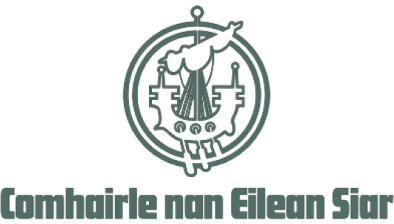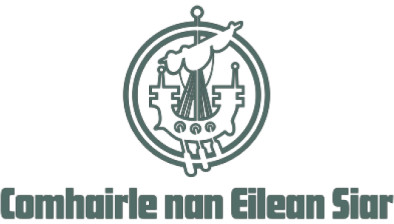Stornoway Airport land to be sold for housing after ruling overturned
Land at Stornoway Airport is to be sold to a residential property developer after Highlands and Islands Airport (HIA) successfully challenged a Scottish Land Court ruling that the disputed areas remained subject to crofting tenure.

The First Division of the Court of Session held that the land was the subject of “compulsory acquisition” following the Second World War, with the effect that any crofting rights would have been terminated without the need for any consent from the Land Court.
‘Minutes of Agreement’
The Lord President, Lord Carloway, sitting with Lord Menzies and Lord Drummond Young, heard that HIA had applied to the Land Court for a declarator that the land in question had been acquired under compulsory purchase powers in the 1940s.
The court was told that the whole area, which included Stornaway Golf Course, was previously owned by the Stornoway Trust, to whom it would have been disponed by Lord Leverhulme in the 1920s.
A proposal to create a civil aerodrome emerged in the 1930s, following which 140 acres of crofting land was resumed by the trust following orders of the Land Court, dated 1934 and 1936.
In 1940 the Secretary of State for Air took possession of what was then a grass landing strip and ancillary facilities, before expanding the airport and establishing a Royal Air Force base to meet the needs of the war effort.
After the World War II the airport returned to civilian use, but the Secretary of State took title to the land by disposition from the trust dated 30 August 1946 and recorded in the Sasines Register on 25 November 1947, backdated to Whitsunday (1 June) 1941.
The disposition followed upon four Minutes of Agreement and Reference between the Air Ministry and, respectively, the Stornoway Trust, the crofters in four townships (Melbost, Steinish, Sandwick North Street and Branahuie), the tenant of Melbost Farm and the Trustees of the Golf Club.
‘Compensation’
The Minutes stated that that the price was to be referred to the Land Court as an agreed arbitrator under the Acquisition of Land (Assessment of Compensation) Act 1919, section 1(1) of which provides that “where by or under any statute… land is authorised to be acquired compulsorily by any Government Department…, any question of disputed compensation … shall be referred to and determined by arbitration of … one of a panel of official arbitrators…”.
The agreement was that the Land Court as the agreed arbitrator under section 8(1) of the 1919 Act would fix the price in terms of section 2, which sets out the rules for assessing compensation for land subject to compulsory acquisition.
The disposition made no reference to compulsory acquisition, but the price was recorded as £13,057 14s – the amount the Land Court’s determination of 31 December 1945 assessed as being the “compensation” due to the trust for the land disposed, with the crofters and golf course also awarded compensation “in respect of interference with their respective interests in the land”.
HIA applied to the Land Court for a declarator that the crofters’ rights had been “extinguished”, arguing that the areas of land in question had been acquired under compulsory purchase powers and that the crofters had been compensated for their losses, with a view to selling the land to a developer.
But the court found in favour of Committee for the Combined Common Grazings of Melbost and Branahuie and declared that the land remained subject to crofting tenure.
The Land Court provided five reasons for its conclusion that no compulsory acquisition took place, which centred on the absence of documentary support for such an acquisition or reference to any statutory provision, the form and contents of the disposition of the land and the use of the terminology of “interference with” rights or holdings in the Crofters’ Minute, which suggested something short of a complete extinction of rights.
However, HIA challenged the decision and the Inner House disagreed with the Land Court’s reasoning, overturning the determination after concluding that the evidence “points firmly to the opposite conclusion”.
‘Compulsory acquisition’
Delivering the opinion of the court, the Lord President said: “The critical documents are the various Minutes and subsequent Land Court orders. Although the Stornoway Trust Minute does refer to there being an agreement of sale and purchase, the price was referred to the Land Court for determination under section 8(1) of the Acquisition of Land (Assessment of Compensation) Act 1919.
“Section 1 of that Act makes it clear that it is dealing with compensation for land ‘to be acquired compulsorily’ by the Government under a statute. Section 2 provides rules for the assessment of compensation in those circumstances.
“That provision was used to determine the compensation payable to the Trust for the acquisition of the golf course. This formed the greater part of the price in the disposition … In all of this, the Court made it clear that the exercise, which it was carrying out, was the assessment of compensation for land which was compulsorily acquired under statute.
“The Crofters’ Minute similarly refers to the Land Court’s appointment as arbitrator under section 8(1) of the 1919 Act. It refers to the assessment of compensation payable under that Act. It specifically stated that it was assessing diminished values consequent upon the ‘compulsory acquisition’ of part of the crofts by the Air Ministry. This phraseology is repeated in the remaining two Minutes for Melbost Farm and the Golf Club.
“The use of this language and, more important, the adoption of the 1919 Act rules is only explicable if what was happening was an exercise in the assessment of compensation following upon the compulsory acquisition of land under statute. In the absence of material counterbalancing factors, the appropriate inference to draw from this is, as a matter of probability, that this is what had occurred; the land had been compulsorily acquired in terms of a statute.”
Lord Carloway added: “The use of the word ‘interference’ does not convey a notion of temporary interruption. Even if it did, as the Land Court held, the compensation which was paid to the Stornoway Trust, the crofters and others was for, inter alia, future permanent loss.
“That was, in the case of the Trust, the ownership of the land (including the golf course) and, in the case of some of the crofters, their inbye land and/or, in the case of others, their grazing rights. This is strongly indicative of the use of statutory powers of acquisition since that alone would give rise to claims for compensation.
“The appropriate inference was that in 1941 the Air Ministry had used compulsory purchase powers to acquire the land… From a practical viewpoint, since the arrangements have already been implemented, in so far as the payment and receipt of compensation is concerned, it is difficult to conceive any reason for withholding approval 80 years on.
“The court has not ignored the fact that sheep may have been allowed to roam, and hence graze, in non-operational parts of the airport. This is not surprising and may be a sensible use of land. It does not persuade the court that, standing the acceptance of compensation for giving up the crofting rights for the land which includes these parts, these rights remain extant.”















